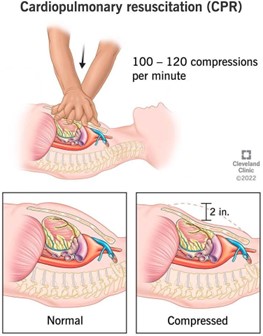A client admited with heart failure requires careful monitoring of his fluid status. Which method will provide the nurse with the best indication of the client’s fluid status?
daily electrolyte monitoring
daily weights
output measurements
daily BUN and serum creatinine monitoring
The Correct Answer is B
Fluid retention is a common complication in heart failure, and monitoring the client's fluid status is crucial to manage the condition effectively. Daily weights are an essential component of monitoring fluid status and are the most sensitive and practical method to detect changes in the client's fluid status. Weight gain is a reliable indicator of fluid retention, and even small increases in weight can indicate the need for changes in the client's treatment plan.
Although electrolyte monitoring (option a), output measurements (option c), and daily BUN and serum creatinine monitoring (option d) can provide valuable information about the client's fluid status, they are not as sensitive or practical as daily weights. Electrolyte monitoring can help detect changes in fluid balance, but it does not provide a direct indication of fluid status. Output measurements can indicate fluid loss, but they do not provide an accurate assessment of fluid retention. BUN and serum creatinine monitoring can detect changes in renal function, but they are not specific to fluid status.
Nursing Test Bank
Naxlex Comprehensive Predictor Exams
Related Questions
Correct Answer is A
Explanation
In case of suspected ingestion of a poisonous substance, the priority response of the poison control nurse should be to assess the child's vital signs, especially breathing and heart rate, to determine if the child is experiencing any immediate life-threatening symptoms. This information will help the nurse determine the appropriate course of action, such as whether to instruct the caregiver to perform CPR or to immediately call for emergency medical assistance.
Asking about the substance ingested and the time of ingestion are also important pieces of information to gather, but they should not take priority over assessing the child's vital signs. Inducing vomiting is generally not recommended unless instructed to do so by a medical professional, as it can cause further harm if the substance ingested is corrosive or caustic.
Correct Answer is C
Explanation
CPR (Cardiopulmonary Resuscitation) is a life-saving procedure that is performed when a person's heart has stopped beating. It involves chest compressions and rescue breathing to restore the circulation of oxygenated blood to the brain and other vital organs. The timely initiation of CPR can significantly increase the chances of a patient's survival.
In a healthcare setting, UAPs/CNAs are often trained to provide basic life support, including initiating CPR, until a healthcare provider arrives. However, giving IV epinephrine, intubating the patient, and obtaining arterial blood gases are all advanced medical procedures that require specialized training and expertise. These actions should only be performed by trained healthcare providers, such as registered nurses, physicians, or respiratory therapists, and cannot be delegated to UAPs/CNAs.

Whether you are a student looking to ace your exams or a practicing nurse seeking to enhance your expertise , our nursing education contents will empower you with the confidence and competence to make a difference in the lives of patients and become a respected leader in the healthcare field.
Visit Naxlex, invest in your future and unlock endless possibilities with our unparalleled nursing education contents today
Report Wrong Answer on the Current Question
Do you disagree with the answer? If yes, what is your expected answer? Explain.
Kindly be descriptive with the issue you are facing.
